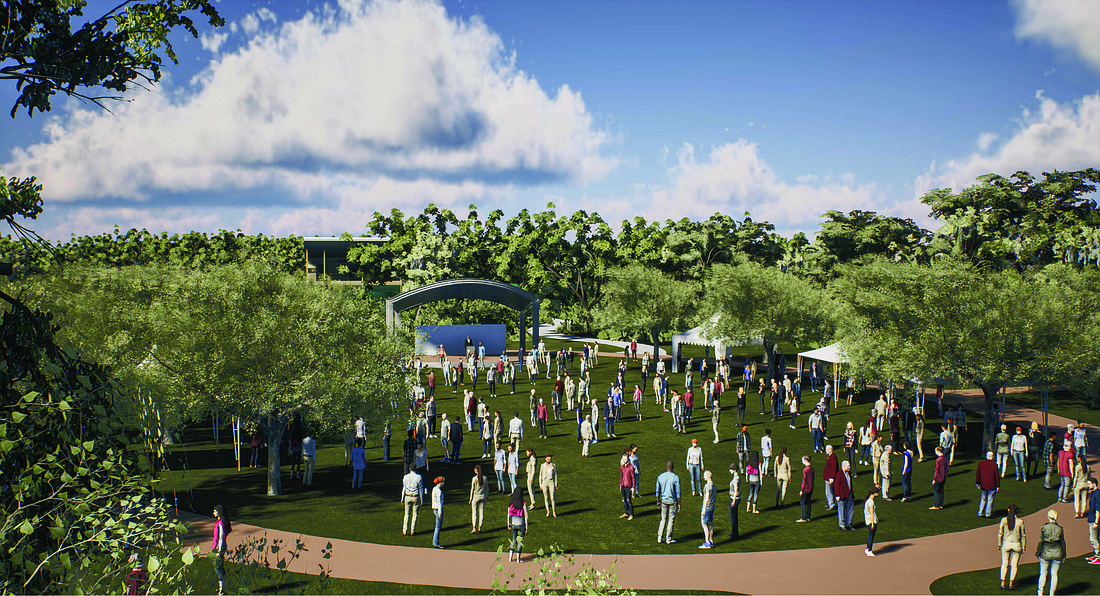- November 19, 2025
-
-
Loading

Rare is the community that doesn’t strive to create some type of small-town town center like St. Armands Circle, where residents and visitors stroll the sidewalks, dine in the restaurants and shop in the boutiques.
“The Truman Show” always comes to mind — the quaint little town where everything was perfect. (It wasn’t really.) In any case, city elected leaders just about everywhere all seem to crave that idyllic vision.
Longboat Key is no different.
If you have lived here the past five years or so, you probably are familiar with the many discussions at Town Commission meetings and the many news stories in the Longboat Observer about town commissioners’ and others’ desires to create a town center in that area between Publix and the Longboat Key Public Tennis Center.
That’s what the above illustration depicts. Sarasota architect Gary Hoyt created the below overhead rendering of what could be in much of that unused and underutilized property.
As we’ve said before: It’s a great idea. The challenge is figuring out how to pull it off.
It’s all about ownership — who owns the land and the buildings. Consider these examples:
The elected leaders in both cities decided to amass the large blocks of properties into a single development zone and put out requests for a master developer to transform them.
The two commissions, separately, spent years examining and rejecting proposals, never signing on with anyone who had the financial wherewithal to pull off the projects. Not only that, but even if they did find a developer, the developer faced major challenges assembling properties to make it work.
Neither worked. The commissions wasted nearly a decade from beginning discussions to giving up.
But we also know both of those areas became some of the most vibrant urban areas in Florida. South Beach became internationally famous, and downtown St. Petersburg is the most vibrant large-city downtown in Florida.
How did that happen? In essence, property values dropped so low that they attracted multiple individual investors and developers, not just one master developer.
That’s one lesson: If you want development, the costs to do so need to make sense.
Here’s the key to that success: One landowner, one developer — Schroeder-Manatee Ranch Inc.
SMR controls everything. It’s not like Main Street Sarasota where you have a different landowner for almost every building and just as many different tenants. That’s why downtown Sarasota looks the way it does (not that it’s bad).
St. Armands Circle has 76 properties and almost as many owners. It’s almost impossible to get them to agree on anything collectively. But two ways St. Armands Circle businesses have been able to maintain the Circle to the degree it has is with two organizations: the St. Armands Business Improvement District, a taxing authority governed by three elected landowners (or their representative) and the St. Armands Circle Association, which consists of Circle merchants, landowners, city officials and others.
Lesson two: The property owners must be willing to work together. Or, it’s best when there’s only one property owner.
It’s all about incentives.
Every community does it, and it’s the wrong thing to do: Give tax breaks and subsidies to private companies to spur development. But if Longboat Key town commissioners are convinced the type of town center that architect Hoyt designed is the right thing for the town, they will have to provide incentives.
One developer told us the town should be ready (and/or willing) to give the 4 acres the town bought for the cultural center to a developer.
That’s not all. This developer said commissioners also should be ready to create a zoning district that will allow mixed uses and heights — e.g., residences on the second and third floors of buildings.
Everyone knows why retailers and others struggle on the Key. There aren’t enough people to sustain them.
And that’s the multimillion-dollar conundrum: residential density.
Residential density is capped on Longboat. Voters must approve any increase in density. And voters typically have rejected any increases.
So if Longboat Key residents want a town center, they must be willing to let more people live on the Key. And that would mean more traffic — but also more choices for dining and shopping.